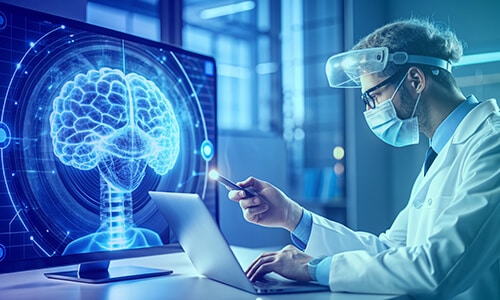The subconscious vision of working healthcare data scientists and analysts includes neatly organized spreadsheets, algorithms, programming languages that process data, and visualization tools that churn out colorful graphs and charts. But this is far from reality.
In fact, data scientists wrestle with one element every day: unstructured data. The big data boom has had a huge impact on the healthcare industry. According to the report, technological advancements in clinical equipment, wearable devices, Electronic Health Record (EHR)And more than that, it has generated a massive amount of data.
In fact, according to statistics, the healthcare industry accounts for about 30% of the total amount of data generated. In addition, on average, a single hospital generates more than 50 petabytes of data each year. However, the problem is that more than 80% of the data generated is unstructured.
What is it and how will it impact data-driven decision making, groundbreaking innovation, healthcare R&D and innovation? Let’s find out in this article.
Structured and Unstructured Data: Two Halves of the Same Capsule


All data generated falls into one of two categories. Now, let’s understand what these two mean.
Structured Data in Healthcare
Any data that is simple, clean, easily accessible, and in a standardized format constitutes structured data. The main characteristics of structured data are:
- Universal or uniform format Contains appropriate attributes for name, date, medical code, etc.
- InteroperabilityStandardization opens the way for healthcare stakeholders across the spectrum to use this data to meet their needs.
- Searchability and processability Facilitates clinical decision-making, referral, and reporting.
Examples of structured data
| Clinical and Medical Codes | ICD and CPT codes, laboratory results reports |
| Demographic information | Patient name, age, date of birth, gender, region, etc. |
| Body Measurements and Vital Signs | Height, weight, heart rate, body temperature, etc. |
| Drugs | Prescription medications, dosages, dosing schedules, allergies, etc. |
Unstructured data in healthcare
Any type of data that is not available in a standardized format, is not accessible, or cannot be processed falls into the category of unstructured data. Unfortunately, the amount of unstructured data generated in healthcare far outstrips its counterparts.
While structured data reveals symptoms, unstructured data reveals subtle differences from the underlying inferences. To best understand unstructured data, you need to look at real-world examples.
Unstructured data example
| Medical Notes | Offline medical records, such as prescriptions written by a healthcare professional. |
| Medical imaging data | Any image generated by clinical equipment such as MRI, CT or ultrasound scanners. |
| Audiovisual materials | Audio, video, or transcript data portions of patient consultations, interviews, or surgical procedures |
| Patient-generated data | Available from wearable datasets, verbally transmitted information, and similar |
| Social media and communication data | such Patient Feedback Analysis Information uploaded by patients for consultation, emails exchanged between medical professionals, and messages exchanged |
| genetic data | Insights into your personal DNA reports and analysis that can detect hereditary diseases |
From Action to Insight: How to Transform and Leverage Unstructured Data to Support Clinical Decision Making
The very same technologies that serve as the source of so many types of unstructured data also provide solutions and techniques to decipher them. By leveraging new technologies such as artificial intelligence (AI), machine learning (ML), and analytics, we can not only organize this type of data, but also understand it for actionable insights.
Let’s see how this is possible.
Using Natural Language Processing (NLP) in Healthcare



In simple terms, NLP can not only read and understand a doctor’s handwriting, but also process it to uncover overlooked aspects. In addition, it can analyze hours of video or audio content and organize the data as needed so that it can be worked on by a layperson.
Predictive analytics in medicine



- Understanding Data for Indicative Results
- Understand your data and recommend solutions through metrics results.
- Understand and predict potential future events and outcomes, recommend solutions, and make predictions.
These three are: Descriptive, normative, predictive Each is analytics.
In healthcare, predictive analytics can be life-changing because it can point to very likely future outcomes. Machine Learning in Healthcare This concept has allowed it to become a reality. Predictive analytics can accurately predict whether a benign tumor will turn malignant, taking into account lifestyle, age, demographics, and more, from medical imaging data.
Likewise, with accurate analysis of genomic data, predictive analytics can help indicate whether an individual is likely to develop diabetes, heart disease, or Alzheimer’s disease. This is a life-or-death analysis that can help healthcare professionals recommend medications, raise awareness, or suggest lifestyle changes to prevent the chances.
Collecting, organizing, and contextualizing unstructured data opens up a multitude of avenues for diagnosing and treating disease. And when the right technology is used, processing is seamless.
But if you want to skip these steps and have data ready to be processed to train your healthcare algorithms and solutions, contact us. We provide customized and ethically sourced healthcare data for all your healthcare needs. Contact us today.


